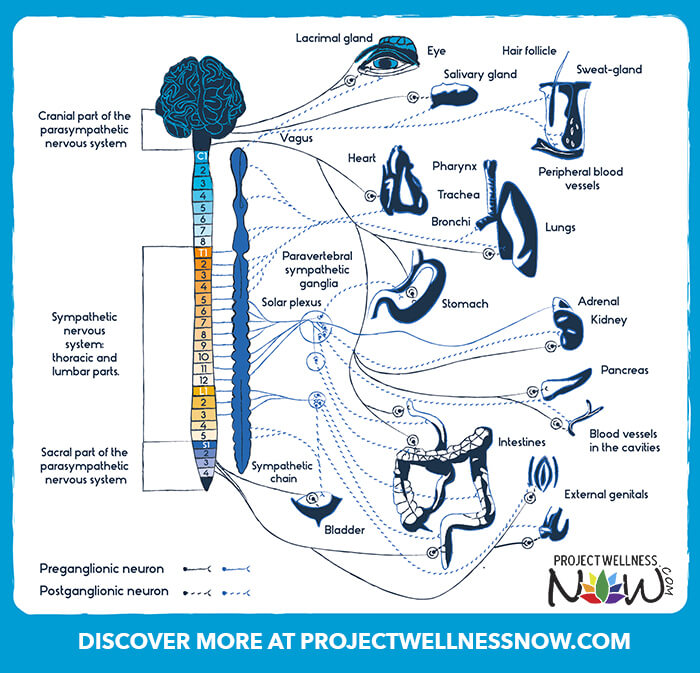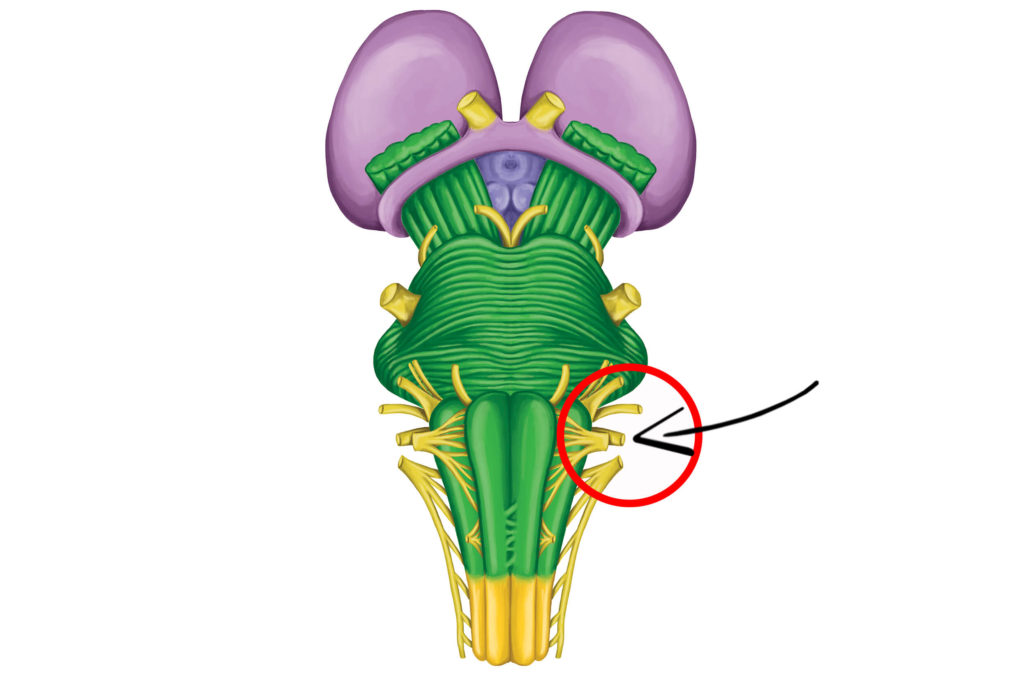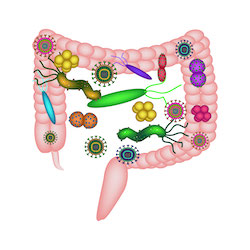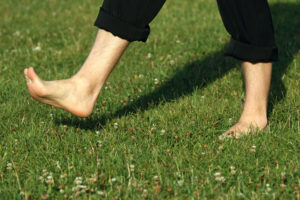One of the most wonderfully mysterious structures in the human body is the Vagus nerve. Within its community of cranial nerves, the Vagus is a true maverick—and in a very good way.
To fully appreciate both the uniqueness and the healing power of the Vagus, let’s begin by reviewing the basics of cranial nerves.
To fully appreciate both the uniqueness and the healing power of the Vagus, let’s begin by reviewing the basics of cranial nerves.

What Are Cranial Nerves?
Cranial nerves are nerves that emerge directly from the human brain (including the brainstem). In contrast, our spinal nerves originate from various places along the spinal cord. There are twelve cranial nerves in total, and they come in pairs: one for each side of the body.
The job of the cranial nerves is to relay information (i.e. bioelectrical nerve impulses) between the brain and various parts of the body. For the most part, this involves transmissions between the brain and various places in the head and neck.
The optic nerve, for instance, transmits impulses to the brain from the retina at the back of the eye. And the olfactory nerve transmits impulses to the brain from the smell receptors in the mucous membrane of the nose.
The notable exception to this head/neck area of influence is the Vagus: the 10th cranial nerve. This amazing nerve has by far the widest distribution within the body—traveling down through the neck and thorax all the way into the abdomen! Hence its nickname: the wandering vagabond.
The Wandering Vagabond
The words Vagus and vagabond share a Latin root meaning to wander or move around—which makes the Vagus nerve’s designation as a “wandering vagabond” perfect. This wide-ranging adventurous nerve wanders here and there throughout a large portion of the body!
As it wanders, the Vagus nerve interfaces with the parasympathetic nervous system’s “rest and repair” functions—particularly in relation to heart, lung, and digestive functions.
It also serves as a bridge between the enteric nervous system (ENS) and the central nervous system (CNS)—linking the intelligence of the “head-brain” with the intelligence of the “belly-brain.”
The Bridge Between the Head-Brain & Belly-Brain
Most of us have heard about the central nervous system: the brain and the spinal cord. What you may not know is that there’s another nervous system—called the enteric nervous system (ENS)—that operates within the digestive tract. And this “second brain”,“gut brain” or “belly brain” contains around 100 million neurons—giving it its unique form of intelligence.
And what does this have to do with the Vagus nerve? Because the Vagus nerve wanders from the brain all the way down into the abdomen, it serves as a bridge between the enteric nervous system (the belly-brain) and the central nervous system (the head-brain).
As it turns out, our so-called gut feelings may have a lot to do with the functioning of the Vagus nerve. Why? Because the information transmitted from the gut to the brain lets the central nervous system know what’s happening in the belly-brain. In other words, our gut has its own form of intelligence—and the Vagus nerve delivers it to the brain as what we may refer to an intuition or a gut feeling.
The Vagus Nerve & Yoga Practice

Dr. Andrew Weil says: “If I had to limit my advice on healthier living to just one tip, it would be simply to learn how to breathe correctly.”
Since the Vagus nerve interfaces with the parasympathetic nervous system, it should come as no surprise that it plays a role in the relaxation response associated with yoga and meditation practice.
In fact, a 2018 study—published in Frontiers in Human Neuroscience—showed that the effectiveness of contemplative practices such as yoga and meditation is due in part to the stimulation of the Vagus nerve via regulated breathing practices. Especially effective in this regard are breathing patterns that prolong the exhalation.
Yogic breathing practices (known as pranayama) that extend the exhalation tend to activate the Vagus nerve, which relaxes us. When you take deep slow breaths—and allow the exhalations to be, say, twice as long as the inhalations—the relaxation response of the parasympathetic nervous system is initiated.
Vagus Nerve Stimulation: Medical Applications
As though all this weren’t inspiring enough, there’s now also a medical device used specifically to stimulate the Vagus nerve. This device—which is similar to a pacemaker—sends mild pulses of electrical energy to the brain via the Vagus nerve.
This technique—known as vagus nerve stimulation (VNS)—has been applied successfully in cases of treatment-resistant depression. It can also be used—in concert with appropriate medications—to help manage epileptic seizures.
The bottom line is that the Vagus nerve can be a wonderful ally, in your quest to maintain overall health and wellness. Make it your friend!
YOU MAY ALSO LIKE:
PRACTICING SELF-CARE THROUGH AYURVEDA
Ayurveda is a 5,000-year-old form of medicine originating inside the Vedic culture of India. Both Tibetan and Chinese medicine have their roots…
HOW GROUNDING KEEPS US HEALTHY AND GROWS OUR JOY
Remember running around the yard barefoot on the grass as a kid, feeling the warm earth beneath your toes? As it…
MARINE PHYTOPLANKTON: THIS MICROSCOPIC LIFE FORM HAS SOME SURPRISING BENEFITS
If all the fish in the world were suddenly to disappear, oceans would seem like vast, empty wastelands. Of course, nothing could…
WHY SHOULD YOU ADD BLUE-GREEN ALGAE TO YOUR DIET
Guest post by E3 Live The discovery of this ancient strain of blue-green micro-algae Aphanizomenon flos-aquae (AFA) has led to a…
MOOLA BANDHA: AWAKENING THE CORE OF OUR SUBTLE BODY
If you’ve been practicing yoga for a while, then you may already have heard about the bandhas – moola bandha, uddiyana…
COLLAGEN PROTEIN BASICS: WHAT IS IT & WHY IS IT IMPORTANT?
COLLAGEN IS A STRUCTURAL PROTEIN There are various types of protein in the human body: signaling proteins, regulatory proteins, enzymes, motor…








